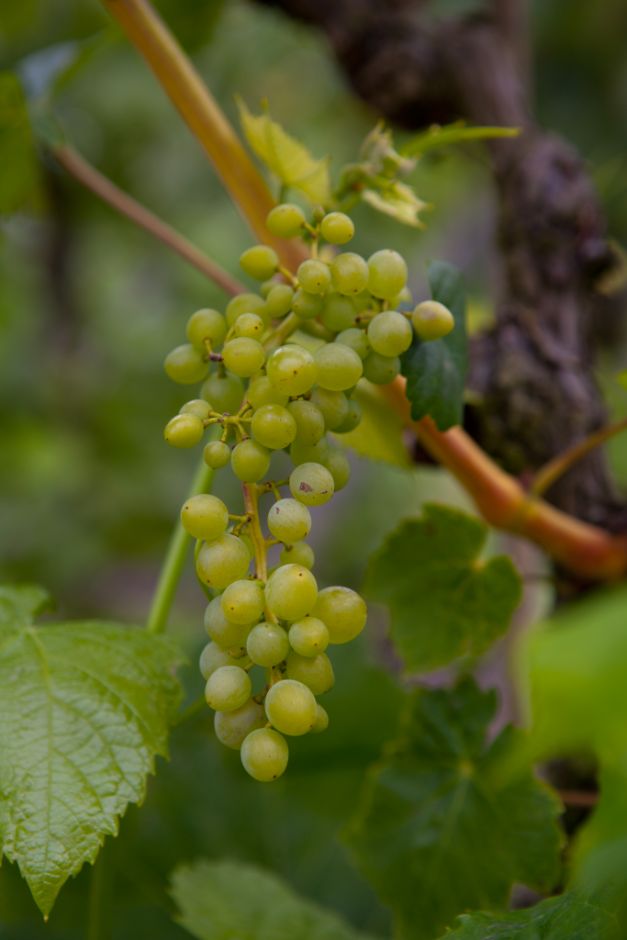Vitis vinifera 'Lakemont' (O/W/S)
grape 'Lakemont'
A seedless dessert grape suitable for outdoor cultivation in sheltered, warmer parts of the country. Abundant, large bunches of sweet, pale yellow-green fruits, with a good muscat flavour ripen from late summer onwards

Buy this plant
Size
Ultimate height
8–12 metresTime to ultimate height
5–10 yearsUltimate spread
2.5–4 metresGrowing conditions
Moisture
Well–drainedpH
Alkaline, NeutralColour & scent
| Stem | Flower | Foliage | Fruit | |
| Spring | Green | |||
|---|---|---|---|---|
| Summer | Green | Green | ||
| Autumn | Green Yellow | Green Yellow | ||
| Winter |
Position
- Full sun
Aspect
West–facing or South–facing
Exposure
Sheltered Hardiness
H5Botanical details
- Family
- Vitaceae
- Native to GB / Ireland
- No
- Foliage
- Deciduous
- Habit
- Climbing
- Potentially harmful
- Pets (dogs): Harmful if eaten whether fruits are edible or ornamental - for further information and contact numbers regarding pets, see the HTA guide to potentially harmful plants
- Genus
Vitis are vigorous deciduous climbing shrubs with tendrils and attractively lobed leaves, insignificant green flowers followed by often edible fruits; some have excellent autumn foliage colour
- Name status
Accepted
How to grow
Cultivation
Grow in well-drained, ideally neutral to alkaline soil in a sunny, sheltered position. Mulch with well-rotted compost or manure in the first years after planting, and train as required. See outdoor grape cultivation
Propagation
Propagate by hardwood cuttings in late autumn or winter, or by softwood cuttings or semi-ripe cuttings from late spring to midsummer or grafting onto Phylloxera resistant rootstocks
Suggested planting locations and garden types
- City and courtyard gardens
- Cottage and informal garden
- Mediterranean climate plants
- Climber and wall shrubs
- Edible fruit
- Wall side borders
Pruning
Pruning is required to encourage flowering and fruiting, and to increase air circulation and so reduce the risk of disease: see grape pruning and training
Pests
May be susceptible to grapevine blister mite, glasshouse red spider mite, brown scale, woolly vine scale and spotted wing drosophila (fruit fly) and may be susceptible to mealybugs under glass
Diseases
May be susceptible to Powdery mildews, grey moulds, honey fungus and virus diseases. For further advice see grapevine diseases
Get involved
The Royal Horticultural Society is the UK’s leading gardening charity. We aim to enrich everyone’s life through plants, and make the UK a greener and more beautiful place.